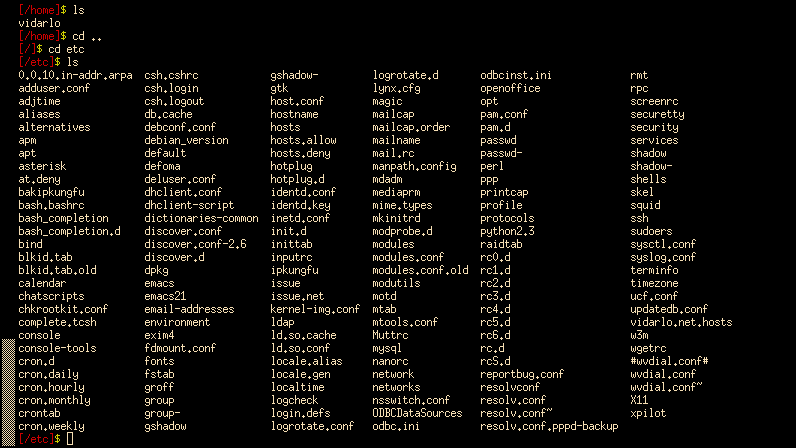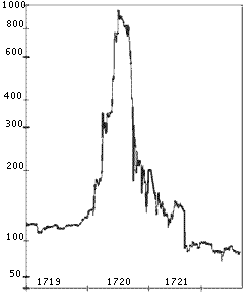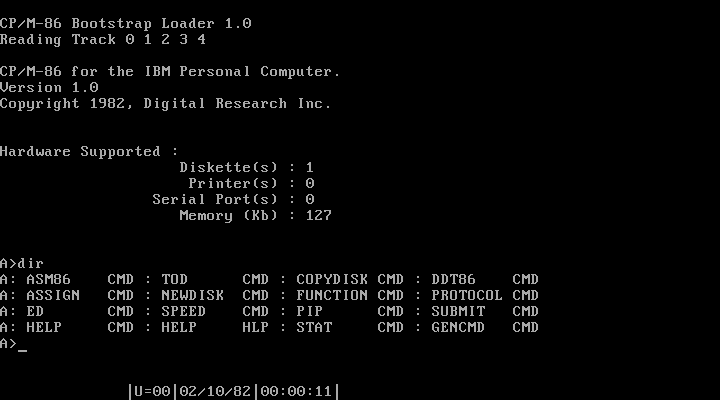|
Televideo
TeleVideo Corporation was a U.S. company that achieved its peak of success in the early 1980s producing computer terminals. TeleVideo was founded in 1975 by K. Philip Hwang, a Utah State University, Hanyang University graduate born in North Korea who closed a successful 7-Eleven franchise he and his wife had run, and invested $9000 in savings in the new company. Hwang had run a business producing CRT monitors for arcade games since 1975. The company was headquartered in San Jose, California. TeleVideo's terminal protocol was popular in the early days of microcomputers and was widely supported by applications as well as terminal emulators (often referred to as "TeleVideo 925 emulation"). TeleVideo also built CP/M-compatible 8-bit desktop and portable personal computers based on the Z80 processor. Up to sixteen of these machines could be connected to proprietary multi-user systems through serial interfaces. After 1982 sales of $98.5 million, the company had an initial public o ... [...More Info...] [...Related Items...] OR: [Wikipedia] [Google] [Baidu] |
Computer Terminal
A computer terminal is an electronic or electromechanical hardware device that can be used for entering data into, and transcribing data from, a computer or a computing system. Most early computers only had a front panel to input or display bits and had to be connected to a terminal to print or input text through a keyboard. Teleprinters were used as early-day hard-copy terminals and predated the use of a computer screen by decades. The computer would typically transmit a line of data which would be printed on paper, and accept a line of data from a keyboard over a serial or other interface. Starting in the mid-1970s with microcomputers such as the Sphere 1, Sol-20, and Apple I, display circuitry and keyboards began to be integrated into personal and workstation computer systems, with the computer handling character generation and outputting to a CRT display such as a computer monitor or, sometimes, a consumer TV, but most larger computers continued to require terminal ... [...More Info...] [...Related Items...] OR: [Wikipedia] [Google] [Baidu] |
Terminal Emulator
A terminal emulator, or terminal application, is a computer program that emulates a video terminal within some other display architecture. Though typically synonymous with a shell or text terminal, the term ''terminal'' covers all remote terminals, including graphical interfaces. A terminal emulator inside a graphical user interface is often called a terminal window. A terminal window allows the user access to a text terminal and all its applications such as command-line interfaces (CLI) and text user interface (TUI) applications. These may be running either on the same machine or on a different one via telnet, ssh, dial-up, or over a direct serial connection. On Unix-like operating systems, it is common to have one or more terminal windows connected to the local machine. Terminals usually support a set of escape sequences for controlling color, cursor position, etc. Examples include the family of terminal control sequence standards that includes ECMA-48, ANSI X3.64, ... [...More Info...] [...Related Items...] OR: [Wikipedia] [Google] [Baidu] |
Corporation
A corporation or body corporate is an individual or a group of people, such as an association or company, that has been authorized by the State (polity), state to act as a single entity (a legal entity recognized by private and public law as "born out of statute"; a legal person in a legal context) and recognized as such in Corporate law, law for certain purposes. Early incorporated entities were established by charter (i.e., by an ''ad hoc'' act granted by a monarch or passed by a parliament or legislature). Most jurisdictions now allow the creation of new corporations through List of company registers, registration. Corporations come in many different types but are usually divided by the law of the jurisdiction where they are chartered based on two aspects: whether they can issue share capital, stock, or whether they are formed to make a profit (accounting), profit. Depending on the number of owners, a corporation can be classified as ''aggregate'' (the subject of this articl ... [...More Info...] [...Related Items...] OR: [Wikipedia] [Google] [Baidu] |
Serial Interface
A serial port is a serial communication interface through which information transfers in or out sequentially one bit at a time. This is in contrast to a parallel port, which communicates multiple bits simultaneously in parallel. Throughout most of the history of personal computers, data has been transferred through serial ports to devices such as modems, terminals, various peripherals, and directly between computers. While interfaces such as Ethernet, FireWire, and USB also send data as a serial stream, the term ''serial port'' usually denotes hardware compliant with RS-232 or a related standard, such as RS-485 or RS-422. Modern consumer personal computers (PCs) have largely replaced serial ports with higher-speed standards, primarily USB. However, serial ports are still frequently used in applications demanding simple, low-speed interfaces, such as industrial automation systems, scientific instruments, point of sale systems and some industrial and consumer products. Serve ... [...More Info...] [...Related Items...] OR: [Wikipedia] [Google] [Baidu] |
Chapter 11, Title 11, United States Code
Chapter 11 of the United States Bankruptcy Code ( Title 11 of the United States Code) permits reorganization under the bankruptcy laws of the United States. Such reorganization, known as Chapter 11 bankruptcy, is available to every business, whether organized as a corporation, partnership or sole proprietorship, and to individuals, although it is most prominently used by corporate entities. In contrast, Chapter 7 governs the process of a liquidation bankruptcy, though liquidation may also occur under Chapter 11; while Chapter 13 provides a reorganization process for the majority of private individuals. Chapter 11 overview When a business is unable to service its debt or pay its creditors, the business or its creditors can file with a federal bankruptcy court for protection under either Chapter 7 or Chapter 11. In Chapter 7, the business ceases operations, a trustee sells all of its assets, and then distributes the proceeds to its creditors. Any residual amount is returned ... [...More Info...] [...Related Items...] OR: [Wikipedia] [Google] [Baidu] |
Hewlett-Packard
The Hewlett-Packard Company, commonly shortened to Hewlett-Packard ( ) or HP, was an American multinational information technology company. It was founded by Bill Hewlett and David Packard in 1939 in a one-car garage in Palo Alto, California, where the company would remain headquartered for the remainder of its lifetime; this HP Garage is now a designated landmark and marked with a plaque calling it the "Birthplace of 'Silicon Valley. HP developed and provided a wide variety of hardware components, as well as software and related services, to consumers, small and medium-sized businesses (small and medium-sized enterprises, SMBs), and fairly large companies, including customers in government sectors, until the company officially split into Hewlett Packard Enterprise and HP Inc. in 2015. HP initially produced a line of electronic test and measurement equipment. It won its first big contract in 1938 to provide the HP 200B, a variation of its first product, the HP 200A low-distor ... [...More Info...] [...Related Items...] OR: [Wikipedia] [Google] [Baidu] |
Neoware
Neoware Systems, Inc., was a company that manufactured and marketed thin clients. It also developed and marketed enterprise software, thin client appliances, and related services aimed at reducing the TCO of IT infrastructure. Neoware owned one of the three available "OS Streaming" technologies that make it possible to remote boot diskless computers under Microsoft Windows and Linux. On July 23, 2007, HP announced that it has signed a definitive merger agreement to purchase Neoware for $241 million. The acquisition was completed on October 1, 2007. Products * Thin client In computer networking, a thin client, sometimes called slim client or lean client, is a simple (low-Computer performance, performance) computer that has been Program optimization, optimized for Remote desktop, establishing a remote connectio ...s * Neoware TeemTalkPericom was acquired July 2003 * Neoware Image ManagerQualystem Technology S.A.S. was acquired April 2005 * LBT Linux-Based Terminal * ezRe ... [...More Info...] [...Related Items...] OR: [Wikipedia] [Google] [Baidu] |
Thin Client
In computer networking, a thin client, sometimes called slim client or lean client, is a simple (low-Computer performance, performance) computer that has been Program optimization, optimized for Remote desktop, establishing a remote connection with a Server (computing), server-based computing environment. They are sometimes known as ''network computers'', or in their simplest form as ''zero clients''. The server does most of the work, which can include launching software programs, performing calculations, and Data storage, storing data. This contrasts with a rich client or a conventional personal computer; the former is also intended for working in a client–server model but has significant local processing power, while the latter aims to perform its function mostly locally. Thin clients occur as components of a broader computing infrastructure, where many clients share their computations with a server or server farm. The server-side infrastructure uses cloud computing softw ... [...More Info...] [...Related Items...] OR: [Wikipedia] [Google] [Baidu] |
Microsoft Windows
Windows is a Product lining, product line of Proprietary software, proprietary graphical user interface, graphical operating systems developed and marketed by Microsoft. It is grouped into families and subfamilies that cater to particular sectors of the computing industry – Windows (unqualified) for a consumer or corporate workstation, Windows Server for a Server (computing), server and Windows IoT for an embedded system. Windows is sold as either a consumer retail product or licensed to Original equipment manufacturer, third-party hardware manufacturers who sell products Software bundles, bundled with Windows. The first version of Windows, Windows 1.0, was released on November 20, 1985, as a graphical operating system shell for MS-DOS in response to the growing interest in graphical user interfaces (GUIs). The name "Windows" is a reference to the windowing system in GUIs. The 1990 release of Windows 3.0 catapulted its market success and led to various other product families ... [...More Info...] [...Related Items...] OR: [Wikipedia] [Google] [Baidu] |
CP/M-86 1
CP/M-86 is a discontinued version of the CP/M operating system that Digital Research (DR) made for the Intel 8086 and Intel 8088. The system commands are the same as in CP/M-80. Executable files used the relocatable .CMD file format. Digital Research also produced a multi-user multitasking operating system compatible with CP/M-86, MP/M-86, which later evolved into Concurrent CP/M-86. When an emulator was added to provide PC DOS compatibility, the system was renamed Concurrent DOS, which later became Multiuser DOS, of which REAL/32 is the latest incarnation. The FlexOS, DOS Plus, and DR DOS families of operating systems started as derivations of Concurrent DOS as well. History Digital Research's CP/M-86 was originally announced to be released in November 1979, but was delayed repeatedly. When IBM contacted other companies to obtain components for the IBM PC, the as-yet unreleased CP/M-86 was its first choice for an operating system because CP/M had the most applica ... [...More Info...] [...Related Items...] OR: [Wikipedia] [Google] [Baidu] |
Intel 8088
The Intel 8088 ("''eighty-eighty-eight''", also called iAPX 88) microprocessor is a variant of the Intel 8086. Introduced on June 1, 1979, the 8088 has an eight-bit external data bus instead of the 16-bit bus of the 8086. The 16-bit registers and the one megabyte address range are unchanged, however. In fact, according to the Intel documentation, the 8086 and 8088 have the same execution unit (EU)—only the bus interface unit (BIU) is different. The 8088 was used in the original IBM PC and in IBM PC compatible clones. History and description The 8088 was designed at Intel's laboratory in Haifa, Israel, as were a large number of Intel's processors. The 8088 was targeted at economical systems by allowing the use of an eight-bit data path and eight-bit support and peripheral chips; complex circuit boards were still fairly cumbersome and expensive when it was released. The prefetch queue of the 8088 was shortened to four bytes, from the 8086's six bytes, and the prefe ... [...More Info...] [...Related Items...] OR: [Wikipedia] [Google] [Baidu] |






